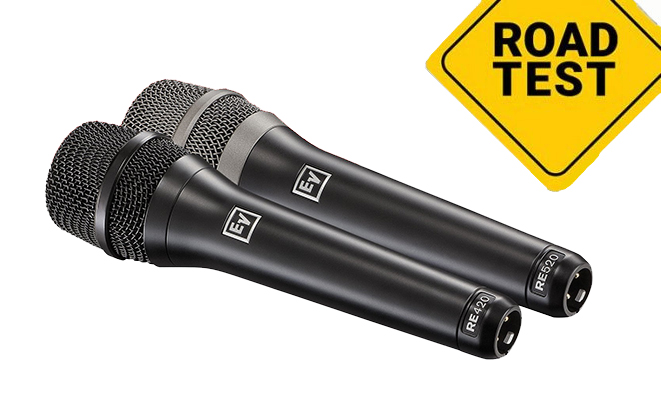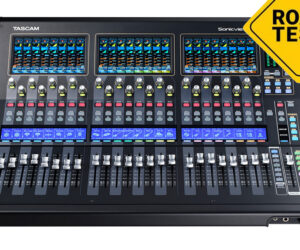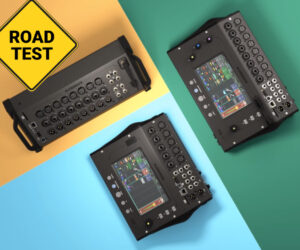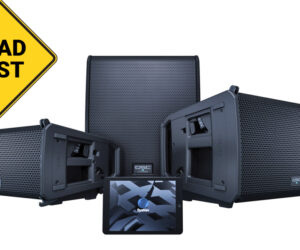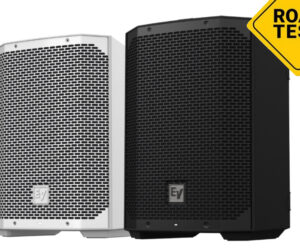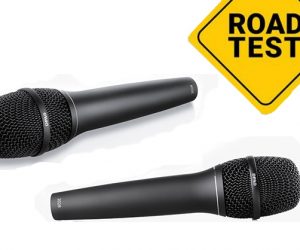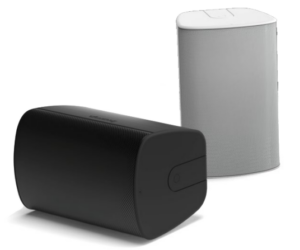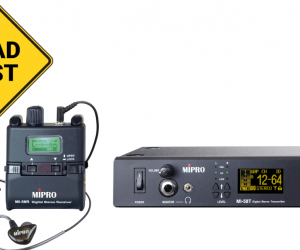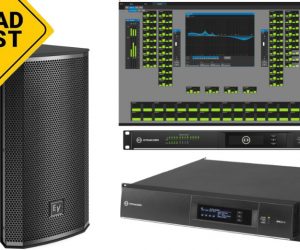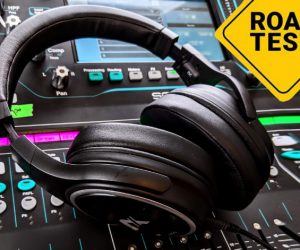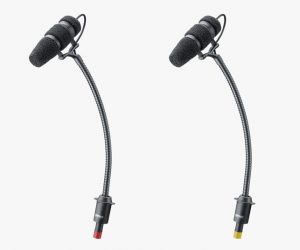The next generation of Electro-Voice RE Series condenser vocal microphones for live performance include the new RE420 (cardioid polar pattern) and RE520 (supercardioid polar pattern).
Both models incorporate internal shock mounts that help isolate the element from vibration and handling noise, and they also include a multi-stage pop filter that minimizes breath blasts and plosives. There’s also a 2-position switch to tailor the frequency response – “Flat” delivers the full frequency of the capsule while “High-Pass” position attenuates frequencies below 150 Hz.
Both models have a zinc die cast body coated with black polyurethane paint and Memraflex steel wire grilles. The primary visual difference between this two is that the RE420’s grille is black while the RE520’s is gray/steel. Both mics are the same size (7.6 inches long and 1.95 inches wide) with weight just over 11 ounces.
The mics ship with a zipper pouch as well as a stand clip with a thread inset to accommodate smaller mic stand threads. Note that both are also available as “head only” capsules for wireless systems with standard mic threads used by EV and many other manufacturers.
The specs: the RE420 has a stated 50 Hz – 20 kHz frequency response, self-noise of 22 dB SPL (A weighted), dynamic range of 127 dB, 5.6mV/Pa sensitivity rating, output impedance of 200 ohms, and maximum SPL of 149 dB (at 1 percent THD); the RE520 has a stated 40 Hz – 20 kHz frequency response, self-noise rating of 17 dB SPL (again, A weighted), dynamic range of 133 dB, 5.6mV/Pa sensitivity rating, output impedance of 200 ohms, and maximum SPL of 150 dB (1 percent THD).
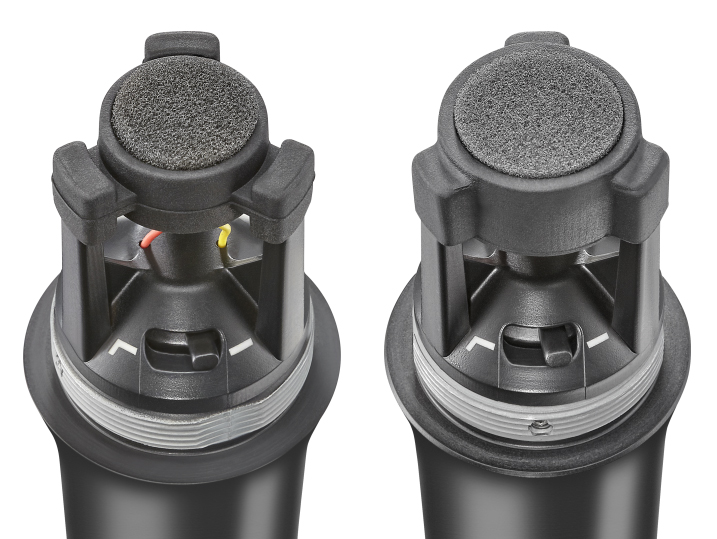
When the mics provided for this evaluation arrived at my shop, my first impression out of the box is that both are aesthetically appealing. The RE520, in particularly, is quite striking with its 2-tone appearance.
Picking them up, they both felt “correct” in the hand, and plugging them into my test bench system revealed clear, true sound and very disciplined polar patterns. I can see the cardioid 420 being useful for vocalists who may not sing directly into the mic or for singers who may opt to share the mic with another singer at the same time. The supercardioid 520 is well suited for singers who can work the pattern while it helps in keeping off-axis sounds from bleeding in. The high-pass filter proves to help keep stage rumble and low frequencies out of the vocal channel, and I like that the switch is under the windscreen so it won’t get moved accidentally.
While I’m no singer, I know what my voice sounds like after all these years. To my ears, the RE420 and RE520 are very “natural sounding” and exhibit a smooth response through the vocal region. The mics have miniscule handling noise. EV provided me with two units of both models, and satisfied that all four were not damaged in shipping and working properly, it was time to take them to some gigs.
Out In The World
First up was a male lead singer fronting a loud pop/rock band. We opted for him to use an RE520 to help reduce bleed from the band, leaving the frequency response as Flat. The other RE520 to a guitar player who sang harmonies, while the drummer was supplied with a RE420 on a boom that he would swing out of his way when not singing.
The lead singer told me he really liked his mic, commenting on how good it sounded in his wedge. Working the mix, I liked how much rejection the mic provided (both the guitar and bass players really crank it up) – a cardioid pattern would not have worked as well. Meanwhile, the drummer sang as loud as I can recall anyone singing at a gig and the RE420 handled it with ease.


